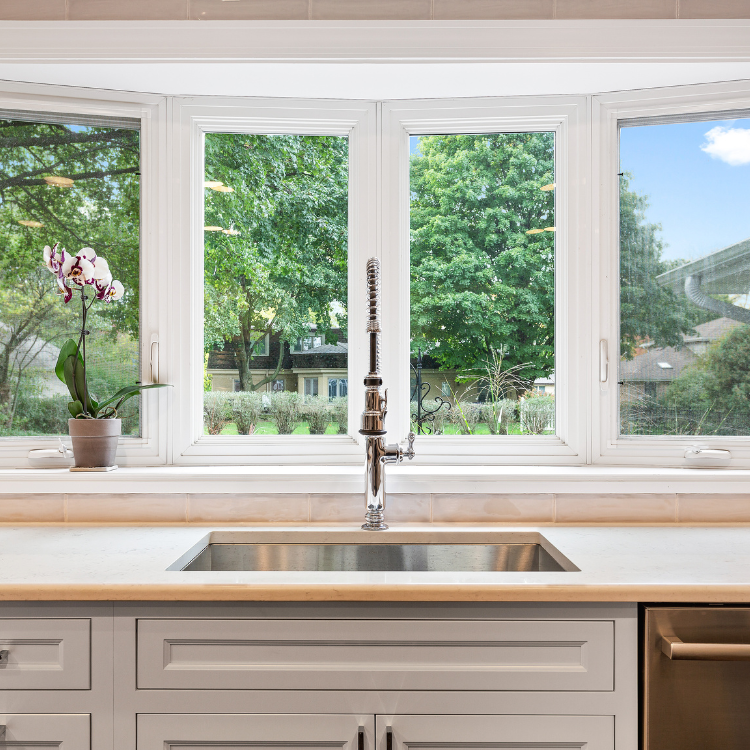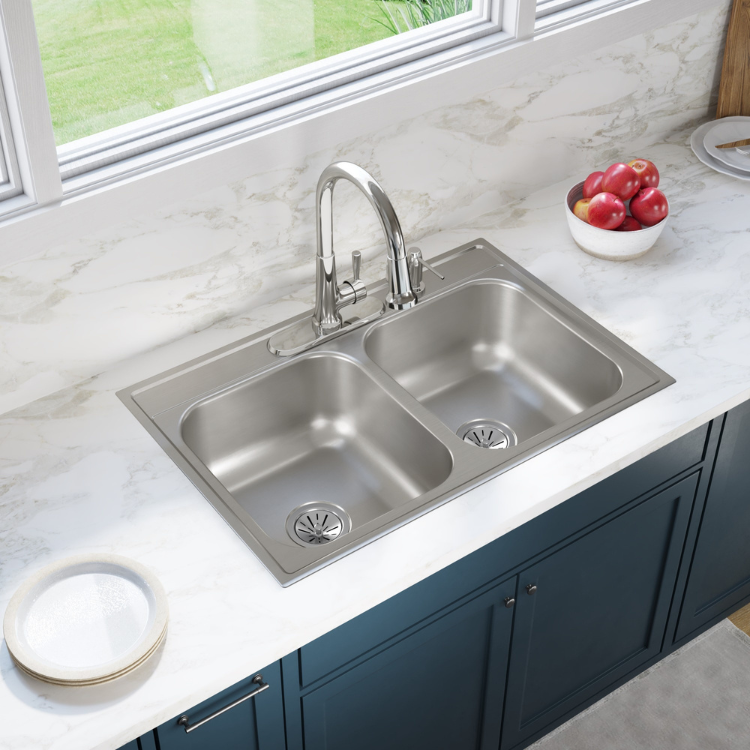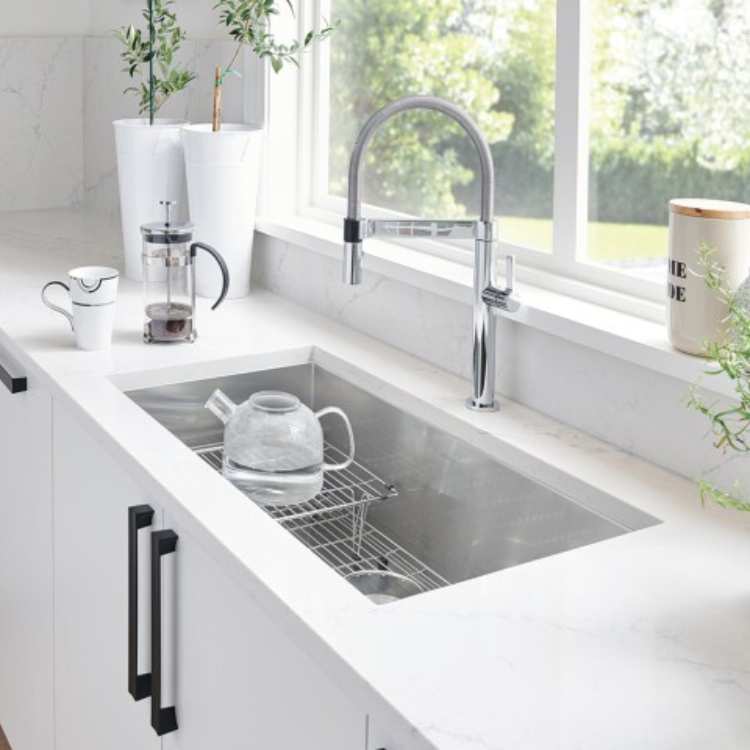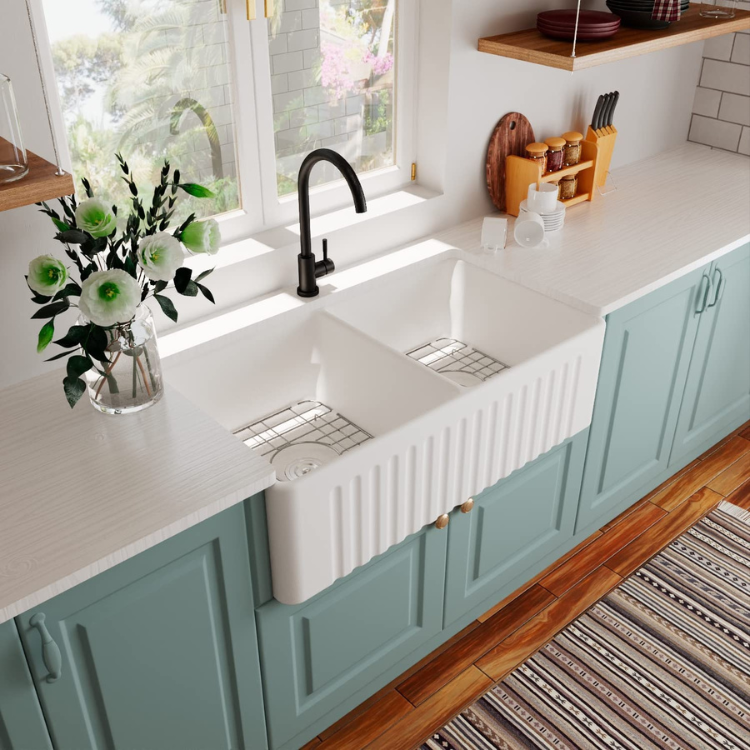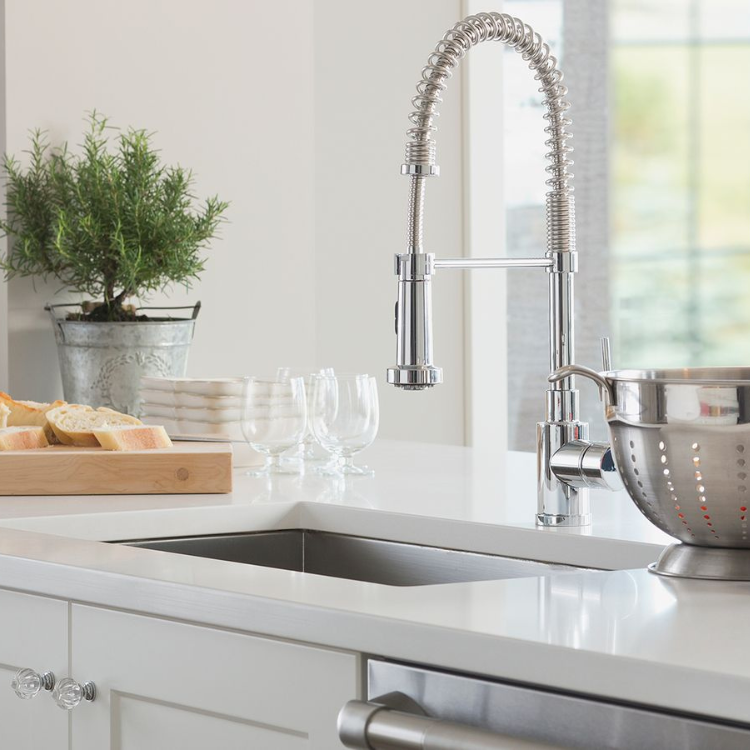During a kitchen renovation, you’ll reach the point when you need to decide on a kitchen sink. Seems simple enough, but this actually proves to be one of the more difficult choices for homeowners. There are a variety of materials, sizes, and mount options.
Style is critical, but function is everything when it comes to selecting your kitchen sink. Your sink needs to be durable, and something you can live with for years to come.
Your kitchen sink is going to get constant usage. Therefore, consider your material choice carefully. The most commonly used materials are composite and stainless steel. Both options are durable and aesthetically pleasing. However, differences in their composition set them apart.
Composite sinks are made from a combination of materials like acrylic resins and crushed minerals like quartz and granite. Materials are then molded into the sink shape and can be integrated or matched closely with a countertop color. Composite sinks are durable, stain-resistant, heat-resistant, and easy to clean. They’re also able to blend in with your countertops beautifully.
Stainless steel is a popular material choice for kitchen sinks. Lightweight, durable and hygienic, a stainless steel sink is a kitchen all-star and still a top choice among homeowners. They are also easy to install, and more affordable.
There are additional alternative materials available to you such as cast iron and fire clay. When it comes to durability and attractiveness, a cast iron sink fits the bill. A heavy foundation means these sinks can take a lifetime of use. The material retains heat well, is durable, and has an attractive finish. Constructed from ceramic clay and minerals, fireclay sinks are especially resistant to scratches, stains, and heat. Similar to the way porcelain is made, fireclay is molded and then fired at extremely high temperatures. This technique makes it hard as a rock and resilient to its everyday use.
The best sink option for your space depends entirely on your needs, design goals and budget. Working with a professional to ensure that you’re making the right decision.
Even before selecting material, you’ll need to decide on the ideal sink size for the cabinet you already have in place or plan to purchase. It’s necessary to pick the correct sink size based on your cabinet so everything will fit together nicely when all is said and done. The key when ordering a kitchen sink is to keep the length of that sink within the parameters offered by your base cabinet. Cabinets are selected prior to sink selection or in conjunction.
Be sure to consider your counter space in your size selection. Bigger might be better, but does it leave you enough work space? Also, think about sink depth. It will take up space in your base cabinet, but make sure it leaves you your desired amount of storage space underneath. Take a look at our gallery to see what sink sizes we’ve selected on previous projects.
Three of the most common types of sinks are:
- Drop-in
- Undermount
- Farmhouse.
Of course there are many other types on the market, but you’ll find they typically fall under one of these categories. For example, you might want a single or a double basin sink, but both can be included in either drop-in or undermount categories.
As the name suggests, a drop-in sink is one that drops in from above through a hole that has been cut in the counter. This is the most popular type of kitchen sink, and it’s immediately recognizable thanks to the rim that runs around the top. That rim sits on the counter and allows the sink to be secured in place.
Undermount sinks are mounted from below, and there is no sink rim sitting on the counter. Some homeowners love the modern look that these types of sinks provide, as you are left with a clean counter lip right down into the sink basin. An undermount sink is most often going to be used along with a solid stone counter of some kind.
Thanks in part to HGTV, farmhouse sinks have gained popularity and offer a unique look that isn’t available with a drop-in or undermount sink. In this case, the front of the sink is actually exposed through the cabinet, allowing you to see whatever material the sink is made from after it is installed. There is some more complicated cabinet work involved here to make room for the sink, which is part of the reason that these are not used more frequently.
Along with selecting a kitchen sink, your faucet choice is going to be equally as important. Be sure to check out our next blog as we dive deeper into the types of faucets available to you.
If you’re ready to upgrade your kitchen sink, or if you have questions about a kitchen remodel, reach out for a free consultation! – Schedule one with our team today!

